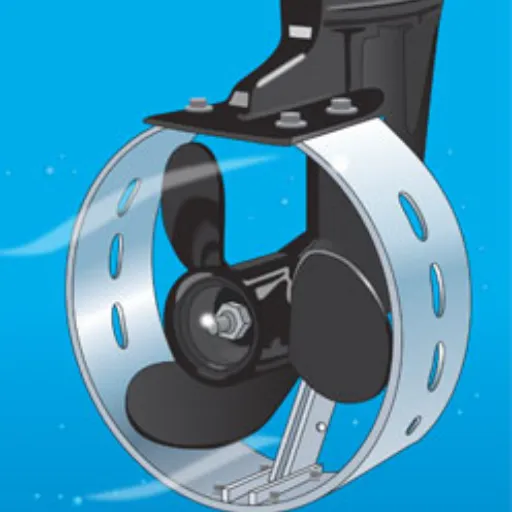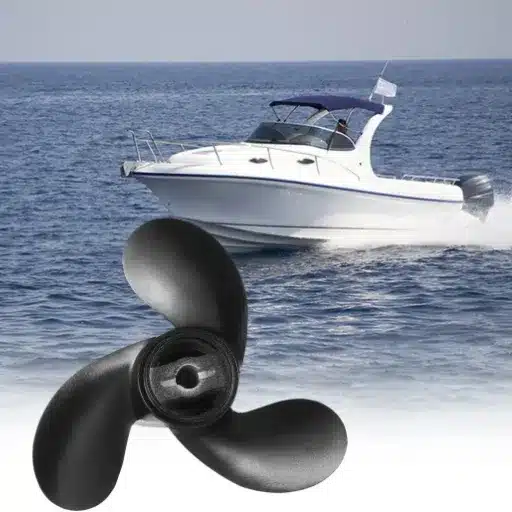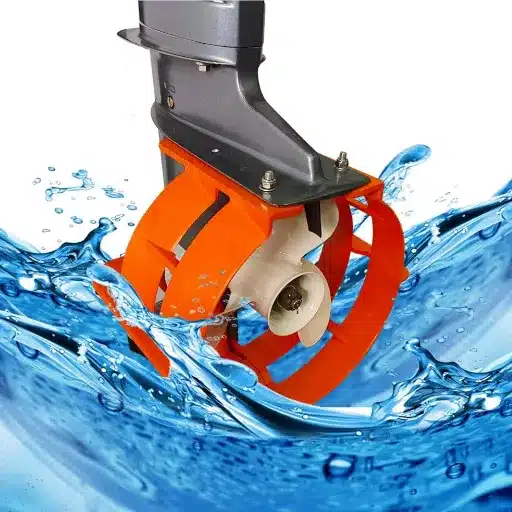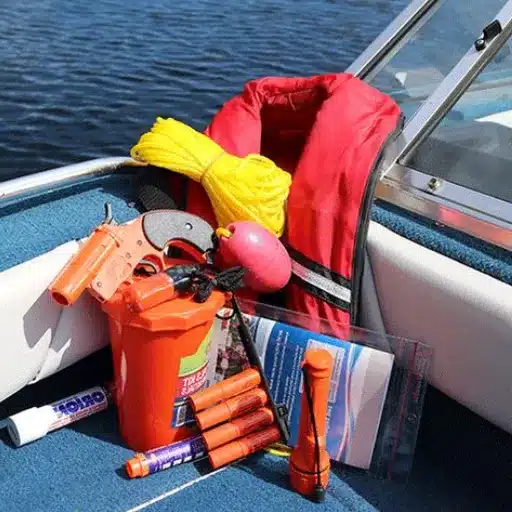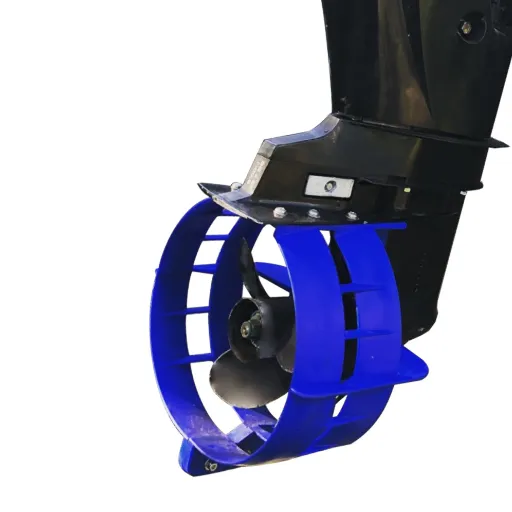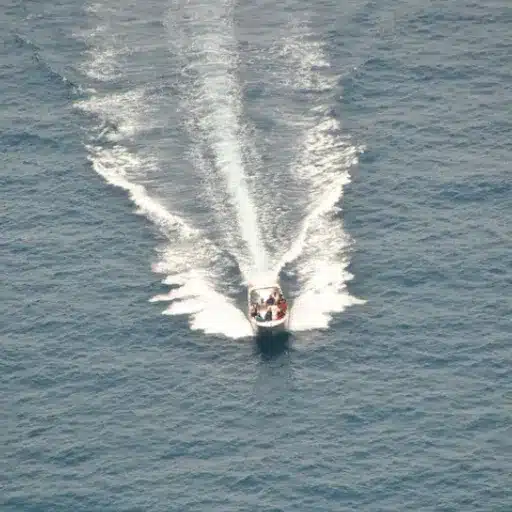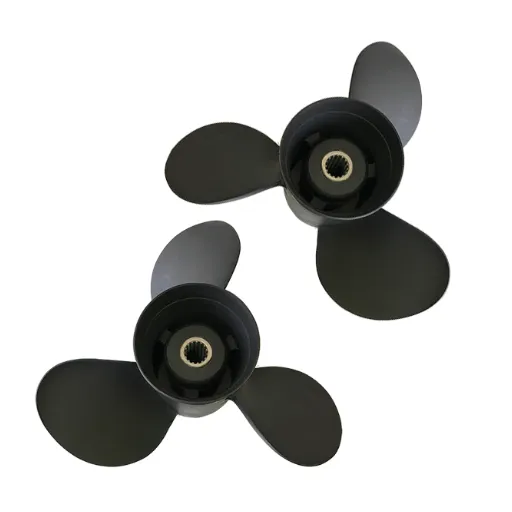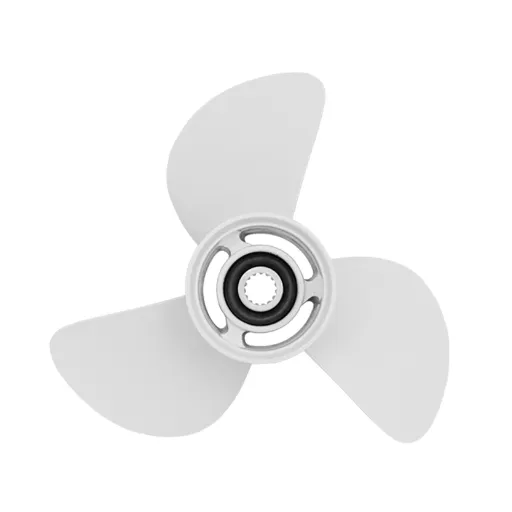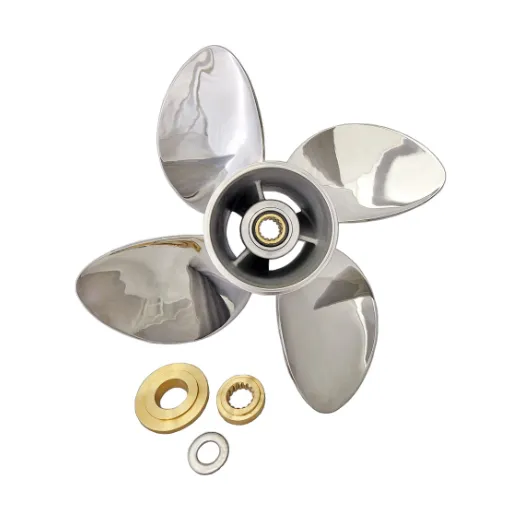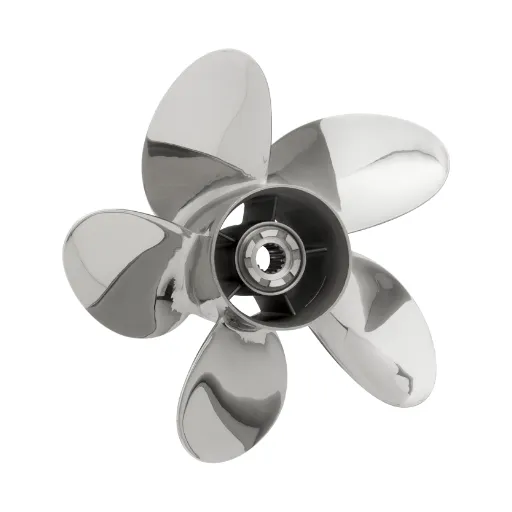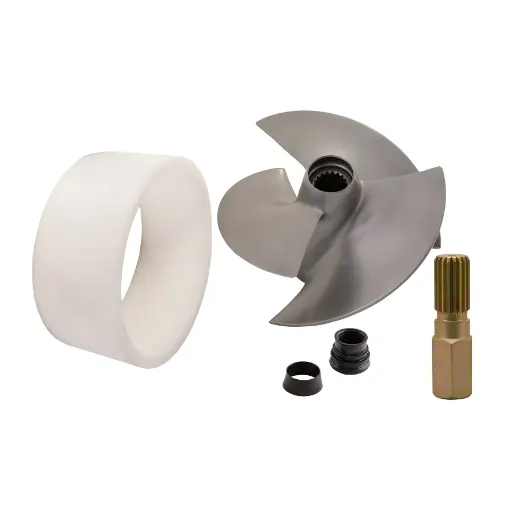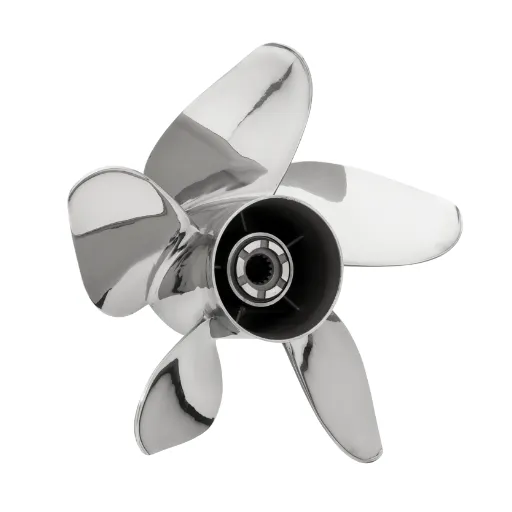Whenever a propeller hits something, it means a lot of repairs and a lost day on the water. Protecting the boat’s propeller is not just about protecting your investment; it is also in the best interest of a safe and smooth operation on the water. However, there is a myriad of tools and devices, and knowing which one is essential would be tricky. In this comprehensive 2025 guide, we will examine the key piece of equipment that every boat owner should have in their arsenal to protect against propeller damage. Starting from understanding how this equipment works all the way through to expert tips on using it most effectively, this article will give you the knowledge to keep your boat running in peak condition. So, stay with us as we delve into how you can protect your propeller and enjoy a stress-free boating experience.
Understanding Propeller Strikes and Their Consequences
What Are Propeller Strikes?
Strikes occur when a boat’s propeller forcefully strikes underwater formations, such as rocks, debris, or marine life. These incidents damage the engineer blades. If left unattended, loss of propulsion efficiency occurs, and sometimes the entire performance of the vessel is compromised. Beyond a proper propeller strike, environmental risks lie ahead, as the disruption of delicate underwater ecosystems may occur. Understanding the causes and consequences of propeller strikes is the first step toward developing practices and tools that can avert them, thereby ensuring safe and responsible boating.
Propeller Strike Accident Statistics
Critical Safety Statistics
These days, the propeller strike is a significant concern for boaters, affecting both human life and marine life. It is said that there are nearly a hundred incidents recorded every year, many of them resulting in severe injuries and deaths. It is asserted by the annual boating accident report issued by the U.S. Coast Guard that a considerable percentage of all recreational boating accidents are those involving propeller strikes. For example, more than 150 strikes were reported in 2022, bringing about dozens of deaths and serious injuries. These statistics emphasize that significant efforts are needed to raise awareness and implement safety measures to protect both human lives and marine environments from such accidents.
Areas with a high density of recreational boating and those frequented by water sports enthusiasts are at a higher risk of incidents involving propeller strikes. The contributing factors proven to cause such accidents include operator distraction, high speed in heavily congested waters, and the absence of propeller guards. The group most affected includes swimmers and snorkelers who are unaware of the approaching boats. Among the methods to curb such tragedies is the promotion of technology-wise engine kill switches and sensors that detect any pesky presence of swimmers or obstacles. Implemented alongside effective safety education campaigns, these measures will significantly reduce the incidence of propeller strikes, making it safer for everyone on the water.
Common Causes of Propeller Strikes
Human error, environmental factors, and mechanical issues often cause propeller strikes. One of the common reasons is attention defects on the part of the operator. Such an inattentive operator may fail to consider the surroundings properly before engaging the machinery. High-speed operation in crowded waters or foul grounds is an accident-prone area, as the operator must remain vigilant for a lockdown response time to sight anyone swimming or any obstruction. Poor visibility contributes to impersonation; this includes weather conditions such as fog or heavy rain, which can obstruct the operator’s field of vision.
Further unsafe movements near the propeller can occur due to inadequate communication between the passengers and the operator. Other such situations arise from mechanical failures, such as faulty sensors or malfunctioning safety systems. Other factors that increase the risk include operators violating safety guidelines, such as not disturbing wake zones. Taken together, these factors show the need to establish stringent safety requirements and raise operator awareness to reduce such accidents.
Key Equipment on a Boat to Prevent Propeller Strikes
🔑 Significance of the Engine Cut-Off Switch
It is a safety device that is incredibly important for preventing accidents and injuries if the operator were to be unexpectedly thrown overboard or lose control of the vessel. Usually, this system remains attached with either a short lanyard or a wireless connection to the operator. Upon disengagement, the system immediately shuts down the engine and cuts power to the propeller, preventing the vessel from circling back uncontrollably and presenting risks associated with possible collisions or propeller strikes.
The studies have shown that the device is effective in reducing injuries. Maritime statistics have revealed that the use of an engine cut-off switch greatly reduces the risk of fatality in the event of a person overboard. Regulations have been established in many jurisdictions that have made the use of this particular device mandatory, underscoring the essentiality of the device in boating safety. Education and awareness campaigns have been promoted to encourage operators to use this important tool, thereby ensuring the safer use of navigation waters by all concerned.
The Working Principle of the Ignition Safety Switch Lanyard
The ignition safety switch lanyard plays a crucial role in accident prevention and ensuring the safety of boatmen and passengers. This simple yet ingenious device immediately shuts down the engines if an operator is thrown overboard by accident or loses control of the vessel. Thus, it prevents this boat from becoming a hazardous uproar that might otherwise cause injury to someone or property damage. Recent maritime safety data suggest a dramatic decrease in deaths surrounding overboard incidents on boats equipped with ignition safety switch lanyards, where the lanyard was used correctly. This reduces the risk of the operator being struck by a vessel that is still in motion. Its use is gradually being considered the best safety practice and is increasingly being legislated both in the United States and abroad. Truly, the device has today come to be of critical importance to modern boating heights.
The Steering Wheel and Its Safety Features
Steering wheels are at the heart of every vessel’s operational system, providing the operator with precise control over its direction and maneuverability. Present-day steering wheels have been designed with ergonomics and functionality in mind, allowing for a comfortable yet firm grip on the wheel, even in severe weather conditions. They also come coated with materials that resist slipping, allowing the operator to have optimum control in critical moments. The advanced steering wheels can even integrate assistive technologies such as electronic steering systems that facilitate smoother and more responsive navigation.
Steering wheel safety features have grown progressively more complex. For example, many steering wheels now come fitted with audible alarms or control systems that warn the operator about certain dangers, including engine overheating and depletion of fuel reserves. If incorporated into automatic response systems, these features will hopefully prevent an operator’s mistake by stabilizing and quickly resolving the problem being presented. In the latest designs, smart touch panels also allow operators to navigate data or communicate without their hands leaving the wheel. Thus, a higher level of safety and efficiency is attained for operations.
Such enhancements in the steering wheel reflect the general trends of safety and ergonomic improvement in the maritime industry. An ergonomically designed steering wheel must therefore allow safe navigation with added reliability. It is a layer of protection on which the safe and efficient navigation of a vessel depends for both the operators and the passengers.
Safety Equipment Essential for Boating
🦺 USCG-Approved Life Jackets Are Essential
Life jackets approved by the United States Coast Guard (USCG) are of paramount importance for boating safety. These devices are designed to provide buoyancy, keeping an endangered person afloat if they fall overboard during an accident. The validity, reliability, and performance of those life jackets are rigorously tested to meet relevant safety standards.
For a life jacket to work correctly, it must be chosen based on its size, fit, and buoyancy rating. For instance, Type I jackets are great in open water and rough seas because they provide maximum flotation, and Type III jackets are more comfortable to wear in calm conditions. Refinements in modern designs incorporate reflective strips and whistles to draw attention during rescue operations. Using USCG-approved life jackets should always be preferred, as they significantly reduce the chances of drowning and ensure a safe experience for all on board.
Life Jackets: Self-Circling Devices and Their Effectiveness
Keeping the operator on the vessel makes safe retrieval possible, or by halting erratic movements, reduces the possibilities of collisions. Self-circling devices are the most critical safety methods in boats and are used in situations wherein the operator loses control of a vessel or falls overboard. Studies have shown that implementing self-circling systems can significantly reduce accidents caused by operator disorientation or incapacitation. Present-day versions further integrate these devices with GPS and automatic engine cut-off systems to ensure better accuracy and reliability. The safety report data indicate that the number of fatal incidents is significantly reduced when vessels are equipped with such devices, demonstrating their effectiveness in enhancing safety on waterways.
⚓ Other Safety Gear for the Boating Industry
- PFDs: The once-very-much-considered essential equipment must sometimes be viewed as such that they can protect the rider on the water. Statistics show that some of the boating fatalities mainly concern individuals who had no life jackets on. Modern PFDs are designed to be comfortable and allow for a range of motion, which is why people tend to keep them on.
- Marine VHF Radios: In an emergency, reliable communication is essential. VHF radios offer an uninterrupted signal on the water surface, in addition to providing an emergency channel, unlike a mobile phone. These radios are a vital tool for connecting boaters with rescue services.
- Fire Extinguishers: One may get a fire outbreak on vessels due to fuel leaks or electrical faults. Carrying an approved fire extinguisher, which is readily accessible, is either a legal requirement or essential in many jurisdictions to contain and resolve the fire promptly.
- Visual Distress Signals or Flares: These visual signaling devices are potentially life-saving in emergencies, especially during nighttime or in poor visibility. The user must verify that these signal devices are in good working condition and that they comply with all applicable regulations for their intended use.
- First Aid Kit: A fully equipped first aid kit with marine features could take care of minor injuries or provide treatment until help arrives. The suggested items are those that are waterproof and corrosion-resistant, like waterproof bandages.
All combined, these safety essentials become a strong safeguard for boaters, significantly reducing the risk while also enhancing preparedness for unexpected situations.
Preventing Propeller Strike Injuries
👨✈️ Best Practices for Boat Operators
The operators are responsible for ensuring safety on board, especially against incidents of propeller strike injuries. Proper techniques and attention can go a very long way toward mitigating the risks.
⚡ Always Use an ECO System
Many modern boats are equipped with ECO systems. This stops the engine if the operator is ejected or loses control of the boat. This prevents the boat from circling uncontrollably and limits the potential for propeller strikes.
🔍 Pre-Departure Safety Checks
Before setting out, check the propeller and other equipment for damage or hazards. Take the time to instruct passengers on safety regulations, particularly to stay away from the area around the propeller while boarding or disembarking.
⚡ Adhere to Safe Speeds
Slow down in busy boating traffic waters, near swimmers, and around docks and marinas. The faster the boat goes, the more dangerous the accidents.
👁️ Keeping a Proper Lookout
An assigned lookout should monitor swimmers, debris, or other boats as one navigates through crowded or low-visibility waters.
🔧 Ensure Visibility in the Propeller Area
It is a wise investment to install safety devices such as a propeller guard and use mirrors or cameras to ensure good visibility around the propeller, particularly when small children or water-sports enthusiasts are nearby.
🎓 Educate Passengers
It is beneficial to familiarize all passengers with the location and dangers of a propeller and to instruct them to remain seated whenever the boat is in motion or to use the allocated ladders when entering or exiting the water.
🚫 Additional Safety Measures
- Avoid Alcohol Consumption: Alcohol consumption before or during operating a boat impairs judgment and reaction time, thereby increasing the likelihood of an accident.
- Be Careful in Shallow Waters: Propellers could strike an object hidden from view or a swimmer in shallow waters. Maneuver cautiously and keep your vessel as far away from near-shores as possible.
By adopting these practices, boat operators can dramatically reduce risks, thus establishing a safer environment for the enjoyment of all on the water.
Boating Safety Training and Awareness
Training and awareness are among the most critical factors in preventing accidents and navigating incidents on the water. Boater education courses must cover all the basics in laws relevant to boating, rules of navigation, and emergency response procedures. For instance, knowing how and when to use navigation lights and sound signals properly enables vessels to communicate with one another more efficiently in conditions such as fog or clear night.
The creation of an awareness culture could involve regular emergency drills to reinforce the core safety concept and in-training on the use of life-saving appliances, such as life jackets and emergency radios. Organizations and local authorities could also enhance safety measures by conducting workshops and disseminating informative materials about the hazards of overloading, lookout maintenance, and threats from adverse weather conditions.
Some recent statistics do help prove that education really reduces the number of incidents. Studies have shown that operators who have completed a safety course are significantly less likely to be involved in accidents. By focusing on training and aggressive awareness campaigns, we can achieve safer waterways and save more lives.
🆘 How to Respond if Someone Falls Overboard
⚠️ Critical First Steps
A few seconds before rescue can mean the difference between life and death. The ‘man overboard’ shout must ripple through the air to alert everyone on board about the fall and indicate from which side the person fell. Someone is immediately appointed to maintain steady observations on the man in the water and direct others about the person’s position.
- Reduce speed while maneuvering to keep the person in the water sighted, while ensuring your vessel does not inflict further harm upon them.
- Throw a flotation aid, such as a life ring or buoy, if possible, may help the person stay afloat and reduce additional panic.
- Approach carefully – The vessel should be turned slowly and should approach the person from downwind and/or against the current, thereby allowing better control of the boat and enhanced safety during the actual recovery.
- Use recovery equipment – For larger ships, consider a rescue device or ladder to secure a safe recovery.
In an overboard situation, time is of the essence, as hypothermia can set in quickly in cold waters. Ensure the engine remains off while attempting to pull the individual back on board to avoid any injuries from him colliding with the propellers. Train the crew members on emergency protocols and conduct regular man-overboard drills so that everyone knows their role during these emergencies, which will significantly improve outcomes in such situations.
Future Trends in Boating Safety Equipment
🚀 Safety Innovators for Propeller Technology
In my opinion, propeller safety technology innovations are crucial in enhancing overall boating safety and reducing accidents. One of these improvements is guard-style propeller systems that enclose the propeller to minimize the risk of injury from accidental contact. These kits continue to be reworked and refined, resulting in minimal impact on the boat’s performance, making them a good and viable choice for many instances of their type of craft. The inclusion of sensor technology to detect obstacles or objects in the propeller’s vicinity has, without a doubt, brought about a paradigm shift. The systems could actually cut the engine off or reduce its speed upon identifying a potentially dangerous situation, thereby significantly reducing the chances of an injury occurring.
On the other hand, the establishment of shutdown methodologies, including wireless engine cut-offs, ranks among the developments. When an operator is thrown out or falls away from controls, the engine must immediately stop, preventing any possible incidents involving propellers. Some systems have GPS capabilities, offering the incident’s location to aid recovery. Lastly, material innovations are helping to manufacture safer propeller designs, such as those with rounded edges or those made from softer materials, thereby simultaneously reducing the potential for injury while maintaining efficiency.
As awareness of safe boating practices increases and regulatory authorities push for stricter safety standards, I envision that these technologies will continue to evolve. This presents the possibility for the future to be one where enhanced design, improved detection, and automated systems work towards minimizing propeller-related accidents. I firmly believe that the promotion and adoption of these technologies can make boating safer and enjoyable for all.
2025 Trends in Boating Safety Regulations
In 2025, one would expect advancements in boating safety regulations as a result of technological integration, driven by increased awareness of environmental and safety concerns. One of the biggest trends will likely be the wider enforcement of mandatory propeller safety measures, including propeller guards and sensors for detecting swimmers or obstacles in their proximity. These developments, aided by tighter oversight of safety equipment mandates, will definitely be a paramount objective of accident prevention at the legislative level.
Another trend I see is the increased use of digital technology in the education of recreational boaters. Governments and other regulatory authorities may establish and accredit standardized online safety training programs that are more accessible and interactive. Thus, boaters at all levels of experience are better prepared to act in the face of an emergency. In the meantime, as geofencing and AIS technologies spawn yet more applications, laws may evolve to limit access to ecologically sensitive sites or heavily trafficked waterways, which are other ways to promote the environment and safety.
Hopefully, the focus on sustainability will remain in boating regulations. There could be limits on fuel emissions, requirements for certain types of eco-friendly boating equipment, or further accountability placed on minimizing pollution. Overall, trends in 2025 would indicate a more holistic approach to safety in boating, incorporating the use of technology, education, and environmental conservation for safer and more sustainable experiences on the water.
💻 The Technological Aspect of Accident Prevention in Boating
From my point of view, technology plays a vital role in preventing boating accidents through various tools and systems that provide some security on the water while ensuring the maximum level of awareness possible. Modern technological tools, such as GPS navigation, radar, and automated identification systems, help boaters determine the exact location of their boats, avoid collisions with other vessels, and identify other ships. These tools are particularly useful when visibility is low or the waterways are crowded, as maximum situational awareness is crucial for safe operation. Additionally, weather updates provided through connected devices enable captains to forecast adverse weather conditions and avoid them, thereby preventing emergencies caused by sudden storms or rough seas.
Yet another critical development is the application of these safety technologies to software and wearable devices tailor-made for boating. Route planning and tide-related apps give people the ability to make informed decisions before venturing out, while highly restricted zones serve as alerts. In contrast, wearable devices like personal locator beacons serve as emergency lifelines, transmitting the location of an individual to rescue authorities. These simply sit in front of the boat systems for collision avoidance and advanced autopilot systems, adding layers of safety to make boating a safer experience.
The merging of technology with education and good boating practices is what truly ensures safety on the water. In other words, technology will serve to prevent accidents and provide aid in emergencies, but these tools work best when used alongside attentive and educated boating. Together, these components work towards risk reduction and the creation of a safe shared experience for everyone offshore.
Reference Sources
-
Safeguarding Your Boat’s Propeller – Discusses propeller shaft protectors and their role in preventing underwater impacts.
-
What Piece Of Equipment On A Boat Is Most Important – Highlights the ignition safety switch lanyard (kill switch) as the most important equipment for preventing propeller strike injuries.
-
Equipment on a Boat: Prevent Propeller Strike Injuries Fast – Explains the importance of kill switches and engine cut-off devices for propeller safety.
-
Protecting Creatures and Coral from Propellers – Describes the use of propeller cages to prevent entanglement and damage.
-
Propeller Safety – Provides safety tips and best practices for avoiding propeller-related accidents.
- Click here to read more.
Frequently Asked Questions (FAQs)
❓ What equipment on a boat makes the difference in preventing propeller strike injuries?
An engine cut-off switch lanyard is the most crucial piece of safety equipment on a boat, preventing injuries from propeller strikes. If an operator falls overboard, this safety apparatus will immediately stop the engine and prevent the propeller from continuing to spin. If the lanyard is used, it drastically reduces the risk of a propeller strike accident. The operator should familiarize themselves with the lanyard location and function so that they may properly use it when out on the water. Other equipment, such as the propeller guard, can be used to prevent injuries, but the cut-off switch is the one that acts so swiftly.
⚡ How does an engine cut-off switch lanyard help prevent propeller strikes?
How does an engine cut-off switch lanyard save lives? An instant action of the lanyard stops the engine the moment an operator falls overboard. This is essential to avoid propeller strikes because the running engine is shut off in the water, and the propellers stop spinning. The device can save a life when people in the water are endangered. An operator should always ensure that the lanyard is securely attached to themselves before operating the boat. By doing so, the operator may help prevent serious injury or fatalities caused by propeller blades striking people who have fallen into the water.
🛡️ What other devices might prevent people from being struck by a propeller?
Other equipment can reduce the hazard of a propeller strike. Propeller guards are an essential safety feature that covers the whirling propeller blades, reducing the risk of injury to swimmers and persons in the water. It is also necessary to have personal flotation devices on board for every individual in case the unfortunate event of a boat trouble does occur. Reasonable steering control, as well as alertness to weather conditions, will surely aid in avoiding dangerous situations that might lead to propeller incidents. Henceforth, safety equipment, along with proactive acts, remains a combined must for safe boating.
🆘 What actions are to be taken by boat operators when a person goes overboard?
The first thing to do is to stop the engine immediately; otherwise, the propellers will continue to spin, causing serious injury. Then should come a calm assessment, checking that the person overboard is all right. If there are life jackets or other flotation devices on board, they can be thrown to the person to allow them to find their way to the boat. Equally important is for the operator to be constantly vigilant and never lose sight of the individual in the water. After keeping this person safe, the operator could now bring the boat safely to the man, using a controlled approach to prevent anything worse from happening.
🛡️ What exactly is the role of propeller covers in boat safety?
Boat safety is a significant concern, and propeller covers contribute to this by serving as a protective barrier for the propeller blades. It is quite possible that one could be injured by accidental contact with the propeller while it is stationary or during maintenance. By lessening these risks, especially with children and less experienced swimmers in the vicinity, propeller covers can prevent injuries caused by being struck by the propeller. Propeller covers should not be viewed as a substitute for other safety equipment, such as an engine cut-off switch or lanyard; however, they certainly make an excellent addition to any boat safety program. When safety equipment is in good working order and ready for use, greater safety is ensured.




